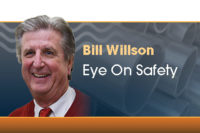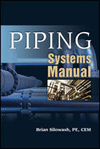There are many excuses not to pursue OSHA’s Voluntary Protection Programs Star certification, but it only takes one reason to pursue it. For Victaulic, it brings us one step closer to achieving our goal of world-class safety excellence. Here is a snapshot of our certification journey and the lessons we learned.
For Victaulic, the first step was obvious. We wanted to obtain support from the highest level in the organization — in our case President and CEO John Malloy.
Lesson learned: Executive leadership support is absolutely essential.
No one at Victaulic had VPP experience. Several directors and managers attended the OSHA Region III VPP conference in 2011 and 2012. Armed with this additional knowledge, a comprehensive internal plan was developed and approved.
Lesson learned: Have a clear picture of the end in mind. Develop an action plan and milestone schedule.
Educating the workforce was critical. VPP familiarization training was conducted throughout the journey.
Lesson learned: Educate and communicate often on the added value of being a VPP-certified site.
The level of effort in preparing for certification was directly proportional to the effectiveness of the shipping and handling management system. Our formal lean program was heavy into safety and 5S, which facilitated adherence to many VPP Star requirements.
Lesson learned: Conduct a gap analysis between the VPP requirements and your current shipping and handling management system to determine the level of effort.
Two VPP teams were established to execute the action plan. Led by the corporate safety and production managers, the VPP implementation team verified the readiness of the OSHA VPP checklist. The VPP Steering Committee was responsible for providing the necessary resources.
Lesson learned: Provide the required resources to ensure a successful outcome.
Victaulic scheduled a visit to a VPP Star-certified foundry to gain perspective on areas of emphasis and to gauge our readiness. Regularly meeting with the regional VPP coordinator helped us monitor progress and provide clarity on the areas of emphasis.
Lesson learned: Visit a VPP Star-certified site within your industry and develop a working relationship with your regional VPP coordinator.
The VPP application package is the most critical correspondence. Don’t take this document lightly. Working with our marketing communications team, four draft revisions were sent to our regional VPP coordinator for review and feedback before a final version officially was signed.
Lesson learned: Treat your OSHA regional representative as if he/she is part of your team. They want you to succeed.
With the VPP application package submitted, the team’s focus shifted to preparation for a one-day pre-assessment visit by the regional VPP coordinator. The pre-assessment focuses on the organization’s ability to “choreograph” the four-to-five-day certification evaluation. Mundane but critical issues such as lodging, meals, private workspaces, interview rooms, off-shift support and escorts for each auditor must be resolved prior to their arrival.
Lesson learned: Sweat the details. Assemble the entire management team who may be even remotely involved in the certification evaluation to participate in the pre-assessment. It is the only chance your team will have to query the lead evaluator prior to the actual evaluation.
For Victaulic, the journey began in December 2011 and our goal of submitting our VPP application package in January 2013 was met. Unfortunately, even the best-laid plans go astray and ours was no exception. The federal government’s sequestration delayed our pre-assessment and evaluation. We remain ready and anticipate VPP Star certification evaluation early in the new fiscal year.
Lesson learned: Keep your perspective under adversity and persevere in continuously improving workplace safety. Don’t fret over things you cannot control.
About the author: Bill D’Amico is Easton, Pa.-based Victaulic’s global director for environmental health and safety and process improvement. Eye on Safety is produced each month by the American Supply Association Safety Committee. For more information, visit www.asa.net.





